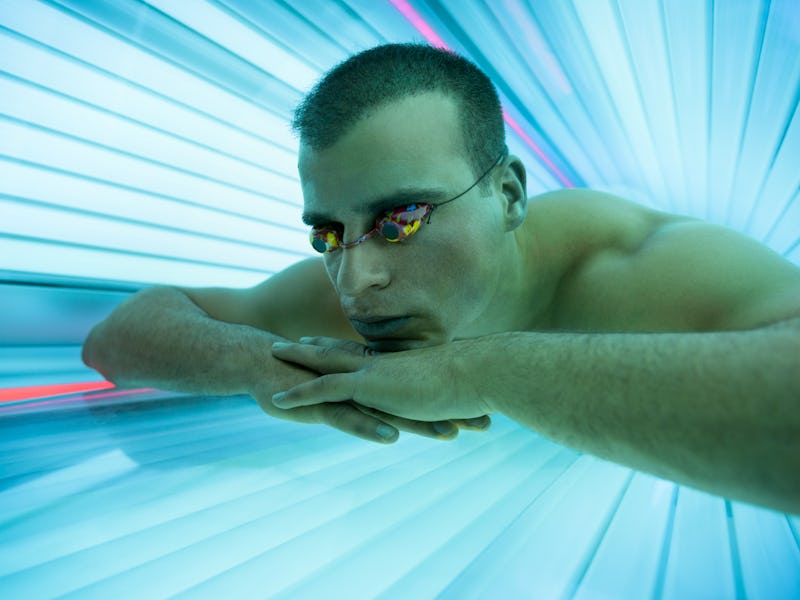Study shows that the tanning industry may be targeting neighborhoods with gay men
"Our concern is whether the tanning industry is targeting high-risk communities."

The risks of tanning are serious; the practice ages, wrinkles, and damages the skin, and can lead to skin cancer. Despite the PSAs condemning it, millions of people still tan, choosing a bronze glow instead of healthy skin.
New research from Stanford University shows certain neighborhoods have more tanning salons than others, and suggests that the tanning industry may be strategically targeting certain populations, mimicking approaches of the tobacco industry to attract customers.
The researchers investigated whether there were more tanning salons in neighborhoods with gay men, who are six times more likely to use tanning salons than heterosexual men. They’re also twice as likely to get skin cancer.
A tanning salon in Brooklyn, New York.
The study, published in JAMA Network Open, reviewed US Census data and business locations in 10 United States cities with the highest numbers of gay, lesbian, bisexual, and transgender residents: Los Angeles, California; Chicago, Illinois; San Francisco, California; Seattle, Washington; San Diego, California; Dallas, Texas; Phoenix, Arizona; Washington, DC; Portland, Oregon; and Denver, Colorado.
Neighborhoods with high proportions of gay or bisexual men are twice as likely to have an indoor tanning salon
The researchers found that neighborhoods with high proportions of gay or bisexual men are twice as likely to have an indoor tanning salon than neighborhoods with fewer sexual minority men. Proximity to tanning salons may be contributing to higher rates of use by gay men and higher rates of skin cancer.
If a tanning salon is around the corner rather than across town, people may be more likely to visit, says the study author.
“If tanning facilities are available right next to your home, you’re probably more likely to use them,” Eleni Linos, M.D., M.P.H., dermatologist and professor at Stanford University Medical Center and senior author of the study, said in a press release. “Our concern is whether the tanning industry is targeting high-risk communities, similar to how the tobacco industry has done in the past, marketing to vulnerable groups.”
The tobacco industry has a long and checkered history of marketing to specific populations: young people, women, and minority communities. Even as the public becomes more aware of the dangers of unhealthy behaviors like smoking or tanning, businesses spend more to curb these concerns and appeal to customers. And like cigarettes, tanning can become addictive. Once you’re hooked, it can be hard to stop.
“Indoor tanning is a class 1 carcinogen,” Linos said. “I don’t think we can be naïve and think of this as just another business. There’s no benefit to indoor tanning. Because we are already seeing very high rates of skin cancer in this community, we need to be particularly vigilant about industry influence.”
The researchers hope this study will inform building healthier communities. They plan to investigate the marketing efforts of the tanning industry in conjunction with Stanford’s PRIDE Study — a long-term study of sexual and gender minority health. But regardless of what they find, the researchers warn that indoor tanning isn’t safe. One major way to reduce its use is to make it more difficult to access.
Contrary to widespread confusion, tanning beds are no safer than baking under the sun. Research shows that just one indoor tanning session can increase the risk of developing skin cancer (melanoma by 20 percent, squamous cell carcinoma by 67 percent, and basal cell carcinoma by 29 percent).